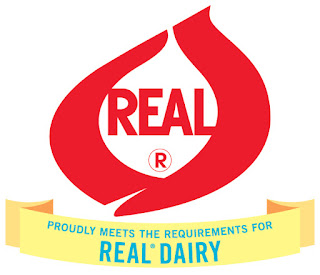Cheese vs. Cheese Food
What's the Difference?
Once again, looking at nutrition we start with my Mom, Diana.
Going shopping as a kid, my Mom always stopped us from buying Cheese Food, Cheese Food Product, Cheese Food Snack and Pastuerized Process Cheese Food (PPCF) along with any other deviants from "Cheese." So, what's the difference?
According to the Sargento Company website cheese is 100% cheese and cheese food or PPCF is something with a minimum of 51% cheese as an ingredient. Ouch.
Thus the name Kraft Singles on the package above. At least the PPCF is clearly noted after the word American on the label.
The Sargento website goes on to say that the following steps are how Processed Pasteurized Cheese Food/PPCF is created:
1. The process starts with a minimum of 51% real cheese.
2. This is ground down and may be mixed with any of the following items including artificial coloring, flavoring, other dairy ingredients, water, salt and mold inhibitors.
3. The mixture is heated to at least 150 degrees Fahrenheit for at least 30 seconds.
4. While heating, emulsifiers and acidifiers may be added.
5. The final product, with a minimum of 51% real cheese, is individually wrapped in plastic creating the Pasteurized Process Cheese Food (PPCF) found in the dairy department of your local supermarket.
Pasteurized Process Cheese Product according to the small print on the side of the front label!
Now I am not saying the PPCF and similarly named items don't taste good, aren't less expensive sometimes, aren't easier to separate slices or don't have some nutritional value. I do think we should look over the ingredients list when purchasing. Or, as my Mom would say, "no, we can't buy that. It's not real cheese."
Here is the list of ingredients in Kraft Singles according to the Huffington Post along with some editorial comments by me in blue ink:
 I would like to add at this point that when deciding on which cheese to eat often opt for the harder cheeses. Why?
I would like to add at this point that when deciding on which cheese to eat often opt for the harder cheeses. Why?1. They have generally have required more enzymatic reaction to create so in essence they are "pre-digested" making them more easily digested when eaten and therefore often produce less gastric upset.
2. They are often made in smaller batches with less "chemicals" and additives.
3. They are less often artificially softened.
 |
| The nerves of the spine help regulate digestion and elimination |
5. There is debate over the nutritional necessity of eating dairy:
Pro- source of calcium, potassium, Vitamin B-12 and helps regulate phosphorous in the boday, source of protein and fat.
Con-sometimes hard to digest, not highly absorbable form of calcium in milk, common allergies and intolerances to milk, weight gain association.
Not sure what is best for you? Contact me here on the BLOG or call for a free 15 minute phone consultation.




No comments:
Post a Comment